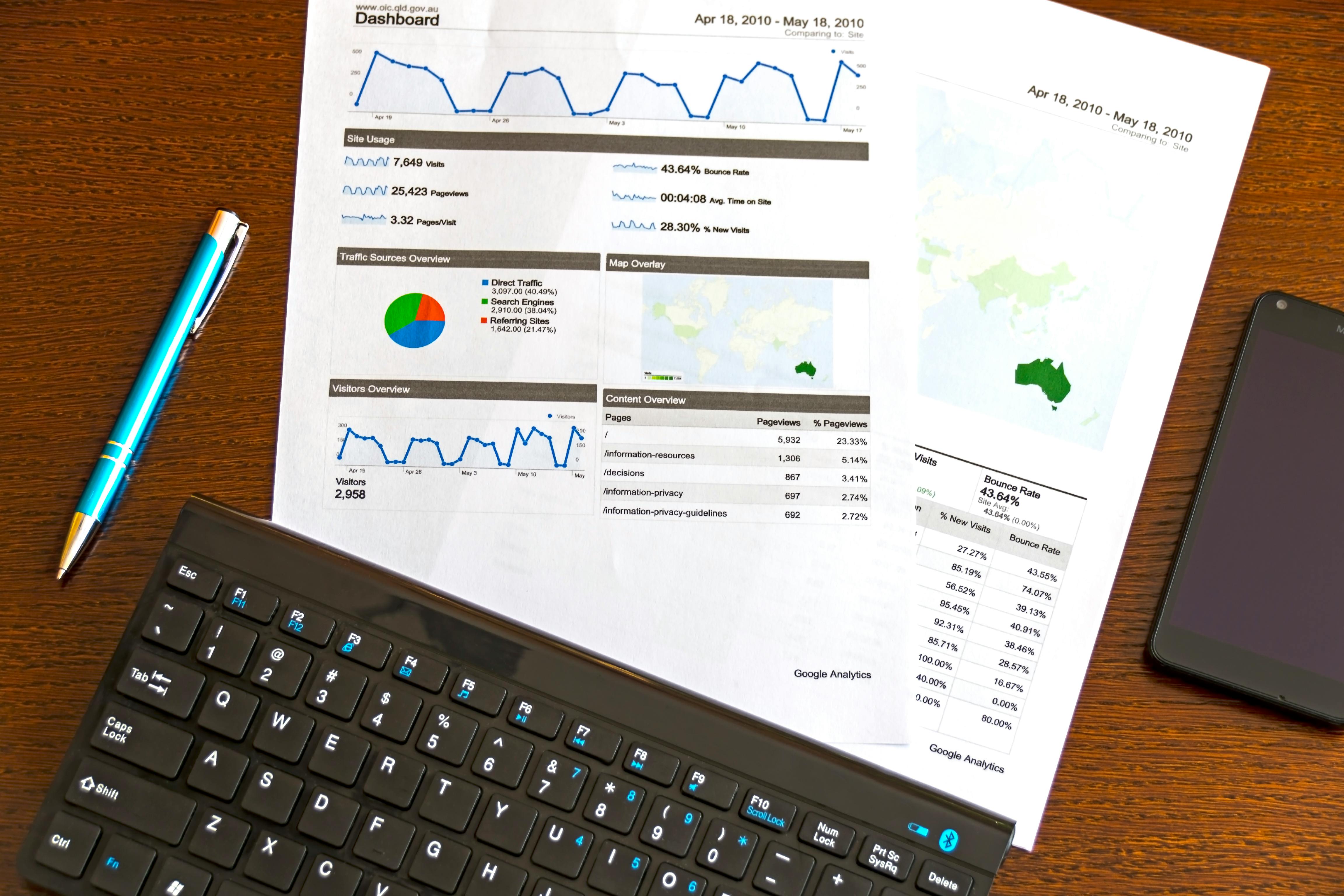
Analyzing ad performance is a critical aspect of digital marketing that enables businesses to gauge the effectiveness of their advertising campaigns, optimize strategies, and maximize return on investment (ROI). By delving into key metrics and leveraging analytical insights, businesses can make informed decisions to enhance campaign outcomes and achieve their marketing objectives effectively.
Understanding Key Metrics
Before diving into analysis, it's essential to understand the key metrics that indicate ad performance and impact:
1. Impressions: The number of times your ad was displayed to users.
2. Click-Through Rate (CTR): The percentage of users who clicked on your ad after seeing it.
3. Conversion Rate: The percentage of users who completed a desired action, such as making a purchase or filling out a form, after clicking on your ad.
4. Cost-Per-Click (CPC): The average cost you pay each time a user clicks on your ad.
5. Return on Ad Spend (ROAS): The revenue generated for every dollar spent on advertising.
6. Engagement Metrics: Metrics such as likes, shares, comments, and video views that indicate audience interaction with your ad.
Analytical Tools and Platforms
Utilize analytics tools provided by advertising platforms such as Google Ads, Facebook Ads Manager, LinkedIn Ads, or Twitter Ads to access detailed insights into ad performance. These tools offer comprehensive dashboards and reports that highlight key metrics, audience demographics, geographic reach, and more.
Performance Analysis Steps
1. Set Clear Goals: Define specific goals for your ad campaign, whether it's increasing website traffic, generating leads, boosting sales, or improving brand awareness.
2. Monitor Real-Time Data: Regularly monitor campaign performance in real-time to identify trends, anomalies, and opportunities for optimization. Track metrics like impressions, CTR, conversion rate, and cost-per-conversion to gauge initial performance.
3. Compare Performance: Compare performance across different ad variations, audience segments, and targeting criteria using A/B testing or multivariate testing. Identify high-performing elements and strategies to replicate success.
4. Audience Insights: Analyze audience demographics, interests, and behaviors to understand who is engaging with your ads. Use this data to refine targeting and personalize ad content to resonate with specific audience segments.
5. ROI Calculation: Calculate ROI by comparing the revenue generated from ad campaigns to the total advertising costs incurred. Identify campaigns with the highest ROAS and allocate budgets accordingly to maximize profitability.
6. Optimization Strategies: Based on insights gathered, implement optimization strategies such as adjusting bid strategies, refining ad creatives, optimizing landing pages, or refining audience targeting. Continuously test and iterate to improve campaign performance over time.
Reporting and Actionable Insights
Compile comprehensive reports detailing key findings, insights, and actionable recommendations from ad performance analysis. Share these insights with stakeholders to inform strategic decisions, allocate budgets effectively, and align marketing efforts with business goals.
Analyzing ad performance is essential for optimizing digital marketing strategies and achieving measurable results. By leveraging analytical tools, monitoring key metrics, and interpreting data-driven insights, businesses can refine their ad campaigns, enhance audience engagement, and drive meaningful outcomes in the competitive digital landscape.
🚀 FAQs
%201.svg)
.svg)
.svg)

Fresh perspectives with an innovative approach.We understand industry trends, consumer behavior, and effective strategies to reach target audiences. Gadsly will introduce an innovative approach that internal teams might overlook due to being deeply immersed in day-to-day operations.
.svg)

Staying on top of digital marketing while managing the day-to-day operations of your business can feel like a full-time job. We simplify the process by implementing strategies that keep your business ahead of trends, using the right tools without the complexity, so you can manage both seamlessly.
.svg)

With so many responsibilities, measuring the success of marketing efforts can be overwhelming. We provide clear, data-driven reports that show how your marketing impacts your business goals, so you can understand what’s working and optimize your efforts accordingly.
.svg)

Balancing marketing efforts with daily operations is no easy feat for small business owners. Our team handles your marketing strategy and execution, allowing you to focus on running your business while we ensure your marketing delivers results.
.svg)

We understand that managing both marketing and business expenses can be challenging. Our tailored marketing solutions are designed to fit within your budget and align with your business management goals, ensuring you achieve maximum impact without compromising your financial health.
.svg)